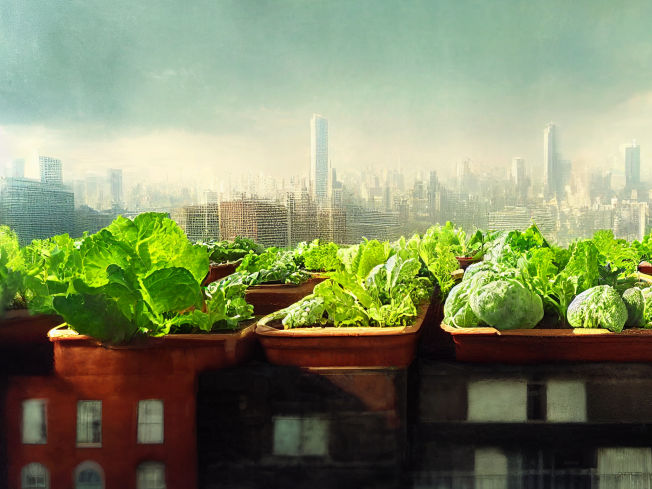CO2 ventilation breakthrough could turn city rooftops into bumper vegetable gardens
Scientists find that exploiting waste CO2 from building ventilation systems can help plants on rooftops grow better
Advertisement
As the world’s cities grow, the hunt is on for ways to make them greener, more sustainable, and more livable. Rooftop farms and gardens that take advantage of underutilized roof space are a popular option, providing new food resources while simultaneously cooling the surrounding area, increasing building insulation, and improving air quality. But the conditions on rooftops — greater solar radiation, more wind exposure, lesser soil moisture — often mean that plants are smaller and less healthy. A team led by Dr Sarabeth Buckley, now at the University of Cambridge, theorized that repurposing the CO2 from building exhaust as a kind of fertilizer might help counter some of these challenges. To explore this, they grew corn and spinach on the roof of a campus building at Boston University.

symbolic picture
Computer generated picture
“We wanted to test whether there is an untapped resource inside buildings that could be used to make plants grow larger in rooftop farms,” said Buckley, whose team named their experimental garden BIG GRO and published their work today in Frontiers in Sustainable Food Systems. “Creating more favorable conditions that increase growth could help make rooftop farms more successful and therefore more viable options for installation on buildings.”
Rooftop vegetable gardens
Corn and spinach were chosen because they are common edible plants and because they use different pathways to photosynthesize, one of which (C3, used by spinach but not corn) is more sensitive to elevated CO2 levels and should benefit more from the exhaust vents’ CO2 content. Corn acted as a control to see how other aspects of placement close to the exhaust vents —for example, the higher temperature relative to the time of year when the experiments were conducted — affected plant growth.
The rooftop garden also featured controls that were fanned by large fans without any exhaust air, in case air movement from the vents was a contributing factor. The concentrations of CO2 in the classrooms inside the building and in the garden were regularly measured to establish how much extra CO2 was reaching the plants.
“With the CO2 measurements, high concentrations were found both inside classrooms and at rooftop exhaust vents when people were in the building,” Buckley said. “CO2 levels averaged above 1000 parts per million — the recommended limit — in classrooms and above 800ppm — high enough to increase growth in plants — at the rooftop exhaust vents.”
A quadruple helping of spinach
Plants were monitored throughout growth for size, number of leaves, and then after harvesting for wet and dry biomass, with striking results: spinach grown next to the exhaust vents had four times the biomass of spinach grown next to a control fan. Even when high winds decreased the size advantage, the plants were still twice as large as the controls.
“There are still many aspects of this system that must be determined before it can be implemented such as the optimal air application design and the possible extent of the enhanced growth effect,” cautioned Buckley. “Also, there is a decrease in growth with increased wind speed, so the optimal wind speed would need to be found and incorporated into the system design.”
The plants’ advantage doesn’t seem to be wholly due to the CO2 ‘fertilization’ - the corn, which should have benefited less, also grew two to three times larger than the controls. However, the study still offers important possibilities for reusing CO2 that would otherwise be considered waste to increase the yield of urban farms and shield them from harsh conditions.
“We are hoping this could lead to the further development of this system and eventual implementation in rooftop gardens and farms,” Buckley said. “If that happens, then hopefully more rooftop farms will be installed. They could provide a multitude of environmental and social benefits such as energy savings for the building, carbon drawdown, climate mitigation, urban heat reduction, local food production, community building opportunities, and aesthetic and mental health benefits.”




























































